The Norwich Lanes: A Vibrant History, A Beating Heart
As a Brit, I’m sometimes stoically averse to admitting pride in things – I think it’s genetic. However, over the years I’ve grown to have a total and utter love and appreciation for the variety of what’s on show in the fine city of Norwich. The beating heart of the Norwich I’ve grown to love grew from its early Anglo-Saxon and Roman roots into one of England’s best-preserved medieval cities. Its history, along with changes in industry and cultural influences from foreign shores has, quite literally, paved the way for a network of alleys, courtyards, and open spaces known as the “Norwich Lanes“.
This area, with its winding streets and well-loved mix of architecture, offers those wishing to learn more a unique journey through time, from the Middle Ages to the present day. This article looks, from a somewhat nerdy point of view, at how many of the famous streets in the lanes were forged in industry. How their histories adapted to the changing times and needs of the city around them, and how the enduring spirit of independence and creativity remains to this day. It’s very much an article of two halves, with information about the specific history of individual Norwich lanes located in sections towards the end.
Origins and Medieval Foundations
To understand the beauty of the Norwich Lanes as they stand today, it’s important to consider the founding events of the area within which they lie. The roots of Norwich stretch back to Roman times when the Iceni tribe inhabited the area. After the Romans suppressed Boudica’s rebellion in 60 AD, they established their capital of East Anglia at Venta Icenorum – the ruins of this capital are still accessible near present-day Caistor St. Edmund, just south of Norwich. As Roman influence waned, Anglo-Saxons began settling the area in the 5th and 6th centuries. The name “Norwich”, is effectively an overarching label for the city area itself and has Anglo-Saxon origins, derived from “North Wic,” meaning “northern settlement” or “northern trading place.” It’s over-arching because the northern settlement absorbed, or was prioritised over the smaller settlements of Westwic (the western settlement and Conesford (the King’s Ford) which stretched along the Wensum River in the modern-day areas of Lakenham and Trowse that once house many a staithe or quay.
These settlements gradually merged into one, with Norwich eventually giving its name to the entire town. By the 10th century, Norwich had become a thriving trading centre, benefiting from its strategic location on the River Wensum. The Norman Conquest of 1066 marked a significant turning point in Norwich’s history. William the Conqueror recognised the town’s importance and ordered the construction of Norwich Castle in 1067, which served as both a royal palace and a symbol of Norman power. The castle’s artificial mound still sits proudly atop the bus lanes and busy shopping streets of Norwich’s city centre.
The early 11th century saw nearly two centuries of construction going into the realisation of Norwich Cathedral, with the structure finally consecrated in 1278. The cathedral’s presence cemented Norwich’s status as a major ecclesiastical centre. Throughout the medieval period, Norwich flourished as a centre of commerce, particularly in the wool and textile trades. The city’s wealth was reflected in its impressive array of churches, including some of those commissioned and sponsored by the wealthy or wider parish for the anchoresses. A walking trail exists (put together by the Norwich Historic Churches Trust) that explores the lost churches of the Conesford area I mentioned earlier; it is well worth considering if you wish to spend an hour taking in the early history of the churches in the city, or learning more about historic figures like Julian of Norwich.
By the 14th century, the wealth of donations and increasing population meant Norwich boasted 57 parish churches within its walls – more than any other city in England, except London. An evolution of self-governance then also led to its development as a distinct urban community. Despite a significant chunk of the populace falling foul of the Black Death, Norwich continued to grow and prosper. The medieval period saw Norwich develop its characteristic narrow lanes and alleys within the confines of its impressive city walls, many of which survive today in the Norwich Lanes area. These winding streets, lined with timber-framed buildings, This rich medieval heritage, combined with later developments and innovative conservation ideas, has shaped Norwich into the unique blend of historical and modern elements that visitors can explore today.
How Norwich’s City Walls Affected Urban Development
The completion of Norwich’s city walls in the mid-14th century significantly shaped the layout of the city and the Lanes area. These walls, which included 40 flint towers and 12 gateways, formed the longest circuit of urban defences in Britain at the time. An interpretation of how they may have originally looked can be seen in this video where they’re superimposed on images of modern-day Norwich.
These walls defined the boundaries of medieval Norwich and influenced the development of the Lanes as they encouraged dense development within their confines, leading to the characteristic narrow, winding streets and alleys of the Norwich Lanes. The shape of the walls around the South, West and Northern edges of the lanes area created distinct inner and outer routes around the city, shaping the circular layout of streets we’ll explore more of later. The 12 gates in the walls also controlled access to the city, this was key in influencing the flow of people and goods and contributing to the development of the Lanes as a commercial area.
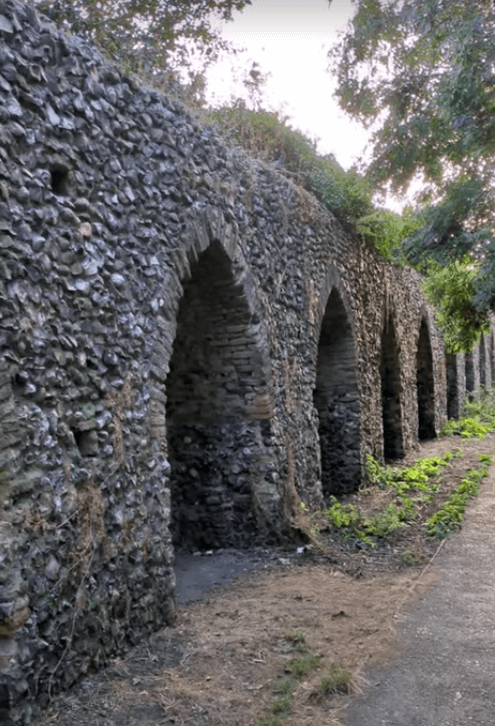
Controversial ideas led to the demolition of most of the walls and gates in the late 18th and early 19th centuries. Most of the reasoning for this stemmed from the need for a ring road and the most inexpensive option was to demolish and use the route of the walls rather than levelling buildings and purchasing properties. This being said, many areas of Norwich labelled as slums were built up in the areas near the walls and cleared alongside the walls during demolition. Despite the loss of the city’s recognisable identity given by the towering city walls, their influence on Norwich’s layout remained. The modern inner ring road of Norwich largely follows the line of the old city walls and is unlikely to change significantly in design, helping to preserve the distinct character of the central Norwich Lanes area now protected by a ring of roads rather than stone.
Of the many areas of the city wall remaining in place, the best examples in my opinion are probably the Black Tower area of the wall, most easily accessible from Carrow Hill, and the sections of this that sweep down towards the River Wensum and the Devil Towers that hug the side of Carrow Bridge. Further to the North, Bishop Bridge remains a stunning example of medieval bridge design and Pull’s Ferry, a 5-minute walk south, gives insight into how the materials for the cathedral were brought in via this 15th-century flint water gate.
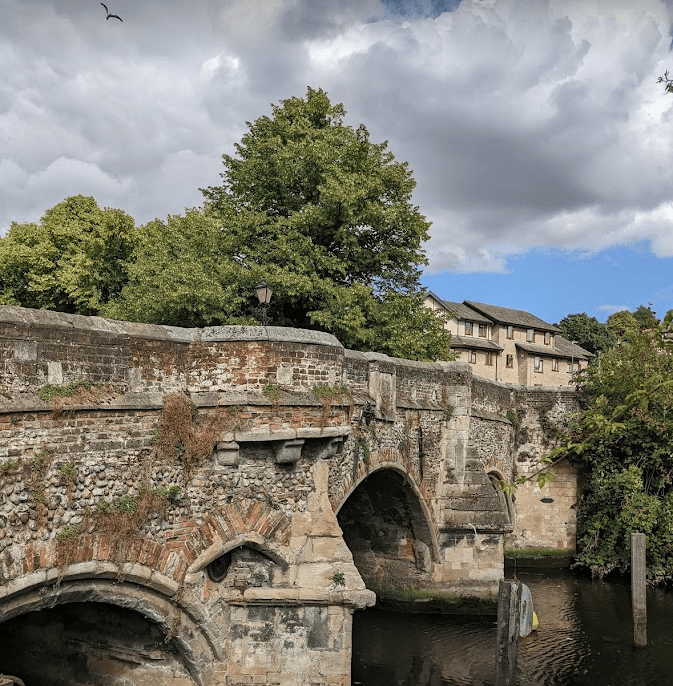
The Strangers and Cultural Diversity
The streets of Norwich were shaped, just like any other city in the UK, by the unending influences of the people and cultures that lived and worked within its walls. The mid-16th century marked a significantly transformative period for Norwich, particularly the Lanes areas, with the arrival of “The Strangers.”
In 1565, Queen Elizabeth I openly invited Dutch and Flemish Protestant refugees from the continent to settle in Norwich, a decision that would hugely shape the city’s cultural and economic landscape. These skilled artisans, primarily weavers and textile workers, quickly integrated into Norwich’s existing industries. The Strangers’ advanced techniques in weaving and dyeing, steeped in traditions brought with them from their native lands, reinvigorated the city’s textile trade, particularly in producing “Norwich Wool Stuffs” – high-quality worsted cloth that became renowned across Europe.
The Norwich Lanes area, with its concentration of workshops and merchant houses, became a hub for this revitalised industry. But the influence of The Strangers didn’t end there. Their architectural traditions left an indelible mark on the roads and streets all over Norwich, with Dutch gable-ended buildings began to appear, adding a distinctive continental flair to the medieval English architecture. Visitors to the city today can see these signature curved building shapes in several places including above The Bicycle Shop on St Benedicts, The Adam & Eve, and further afield in Eaton in the form of The Red Lion. A particularly stunning example, painted in gleaming white, exists just outside Norwich Cathedral, attached to the Norwich School. examples found next to the Norwich School within the cathedral grounds and the overall character of streets like Elm Hill and Colegate which bear witness to this Dutch influence.
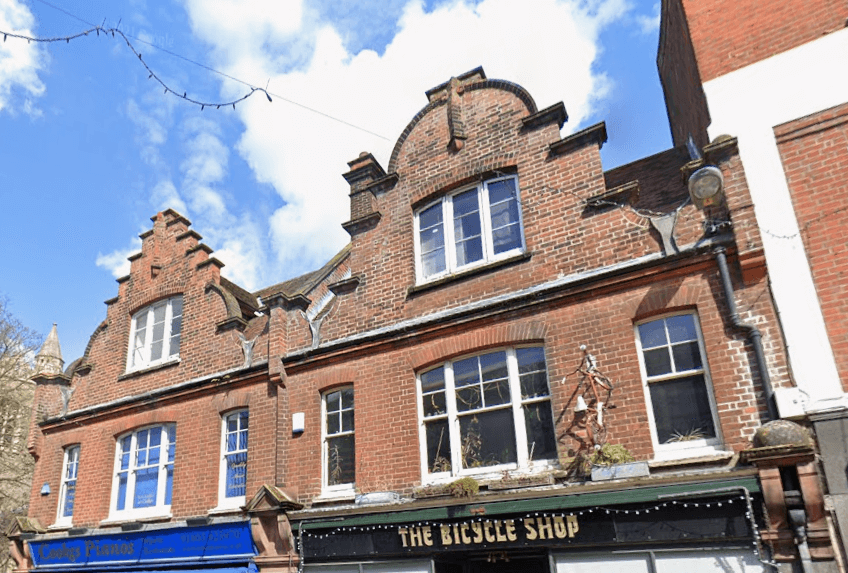
The Strangers also introduced new culinary traditions and crafts. Football fans stroll through the city towards Carrow Road, many of them completely unaware that their beloved team is also shaped by The Strangers. The famous Norwich Canaries, bred for their singing abilities, trace their origins to this period (many travelled with the refugees of the times to the area), while the influx of new residents led to some overcrowding of the Norwich Lanes, with many buildings subdivided to accommodate the growing population. This period of cultural exchange created an atmosphere of innovation and diversity that became characteristic of Norwich and while there were periods of opposition and division, on the whole Norwich was known as one of the most accepting cities in England, fostering further industries in the later centuries.
How Further Formative Industries Affected Norwich’s Architectural Appearance
Norwich’s textile industry, particularly its renowned shawl production, played a significant role in shaping the economic prosperity and architectural evolution of the Norwich Lanes. In the late 18th and early 19th centuries, the fine city became famous for producing high-quality dress shawls, aimed at the middle and upper end of the market. The city’s skilled weavers and dyers, working for local textile manufacturers, created shawls that rivalled the coveted Kashmir shawls imported from India in quality and design.
The Norwich shawl industry continued from 1800 to 1870, with Norwich manufacturers producing huge, four-metre, all-silk shawls with brilliant colours and complex patterns that sold relentlessly. This prosperity is reflected in the architecture of Norwich. For instance, St. James’ Mill at the northern extremes of the Norwich lanes area, built in 1839, looms gracefully over the river in modern Norwich, with kayaks and the growing paddleboarding enterprises slipping past its foliage-covered facades. This impressive towered mill was once the largest textile mill in Norwich. Today, its Italianate design stands proudly as a reminder of how the textile industry is literally woven into the fabric of Norwich’s history.
The success of the textile industry also led to the construction and renovation of many buildings in the Lanes areas, interweaving these industries between up-and-coming breweries, show-makers, confectioners and condiment producers, like Colman’s of Norwich. These wealthy textile merchants and manufacturers built elegant townhouses and invested in shops, contributing to today’s architectural diversity. However, by the 1870s, the shawl industry began to decline due to changing fashions and increased competition. This led to a shift in Norwich’s economy, with new industries like shoe-making and brewing taking prominence.
The shoe-making industry left its mark on the Lanes’ architecture in the form of The Bridewell. Now home to the Museum of Norwich, it was once a shoe factory, house of correction and prison. Its sturdy brick structure, typical of industrial buildings of the time, now houses exhibits showcasing Norwich’s industrial heritage, including links with mustard, chocolate, and its shoe-making past. The shoe-making industry continued to evolve in Norwich with the Norwich Show Company (more commonly known as Bally Shoes) taking the lead for many years and Start-Rite joining them also in the Heigham Street areas of the city before a contraction of the industry and redevelopment of much of the land. Hall Road Bally Shoe factories were demolished to make way for commercial units, including The Show Makers pub run by the Hungry Horse chain. Other Bally units like the factory on Queens Street, still exist and have been repurposed as offices.
Meanwhile, the brewing industry also played a vital role in shaping Norwich. Bullards Brewery, established in 1837, and Steward & Patteson were once the city’s major brewers, with Bullards’ Anchor Quay brewery being a prominent red-bricked, towering landmark just north of St Benedicts. The closure and eventual demolition of these breweries in the mid-20th century reflected a broader trend of consolidation within the brewing industry. However, the legacy of Bullards survives through several historic pubs in Norwich, such as The Murderers (Gardeners Arms) on Timber Hill, The Sir Garnet near the market, and The Kings Head on Magdalen Street.
The chocolate industry, with companies like Mackintosh’s and Caley’s, also had a significant presence in Norwich. The Mackintosh factory on Chapelfield Road was a central part of the city’s industrial landscape until its closure and the site’s redevelopment into the Chapelfield shopping centre (now Chantry Place) and associated underground parking. This transformation from industrial production to retail reflects the broader changes in and around the Norwich lanes areas, where former factory sites have been adapted for modern use. Similarly, Caley’s, which began as a textile company before shifting to chocolate production, saw its factory integrated into the shopping centre, blending the city’s industrial past with its contemporary commercial identity.
The economic transition from textiles to shoe-making and brewing is reflected in the repurposing of many buildings in the Lanes. Former textile workshops were converted into shoe factories, and new purpose-built structures were erected to house these growing industries. Meanwhile, the proliferation of pubs and taverns catered to the city’s growing workforce. The legacy of Norwich’s textile industry, along with its subsequent evolution into shoe-making and brewing, continues to influence the character of the Lanes. It shows in no uncertain terms the area’s ability to evolve economically while maintaining its rich architectural heritage, creating a unique urban landscape that tells the story of Norwich’s industrial past.
Notable Streets and Their Stories
St George’s Street and St Benedicts
St George’s Street and St Benedicts are integral to the creative and independent character of the Norwich Lanes. Historically, these streets were industrial hubs, particularly around the River Wensum. The old industrial mills and warehouses lining the river on St George’s Street have largely been repurposed. Today, they house all kinds of business startups, creative spaces, and residential spaces, blending their historical industrial charm with contemporary use. Norwich institutes like The Norwich Playhouse bring comedy, musicals and theatre to the streets while the streets that branch off from St. George’s are home to relics of the shoe-making era; St Mary’s Works and St. George’s Works (on Colegate) being prime examples of shared workspaces and community art projects buzzing with life within their heritage walls.
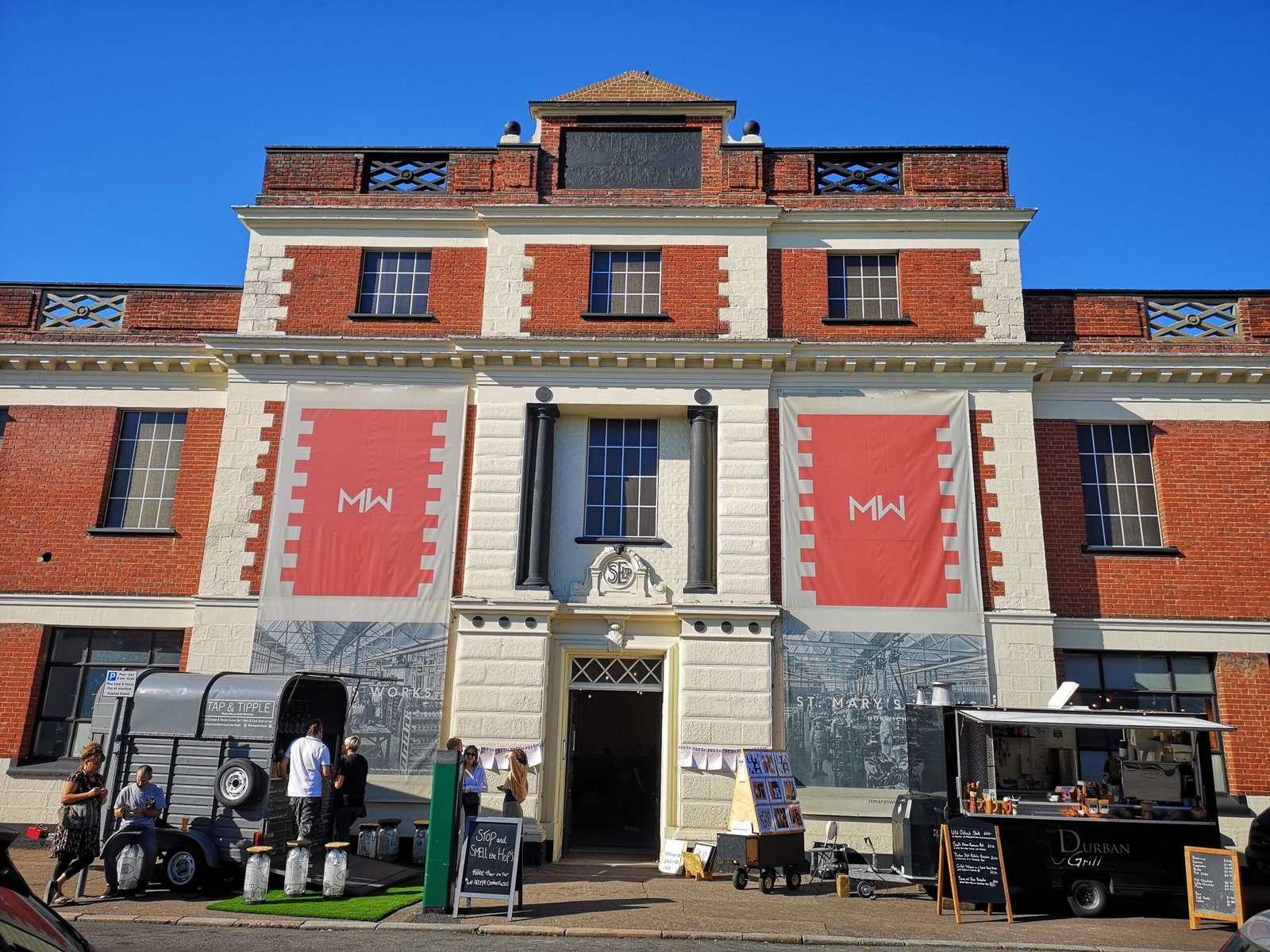
St Benedicts, with its distinctive alternative vibe, is home to independent shops, historic pubs, and an eclectic mix of modern culture. Once the location of Bullard’s Brewery, which dominated the Norwich brewing scene, the brewery’s closure in the mid-20th century paved the way for a new wave of cultural businesses including indoor alternative markets. Now, venues like The Ten Bells and The Plough reflect the area’s pub heritage, while The Bicycle Shop, a cafe in a Dutch-gabled building, serves as a reminder of the city’s connection to Dutch immigrants.
St Benedict’s Church, a Grade I listed building with an 11th-century round tower, stands as a poignant reminder of Norwich’s wartime history. Badly damaged in a 1942 air raid, only its tower remains today, hidden behind residential blocks near the road that holds its name.
In recent decades, these streets have evolved to support Norwich’s vast spread of interests. For example, St George’s Street is home to the Norwich University of the Arts (NUA), housed in several historic buildings originally constructed in the 19th century, this former technical institute now hosts an array of courses and the Garth cloister sees architecture blending monastic flint work with contemporary glass walls. Interestingly, one of the university’s other properties on Duke Street has aspects of the flemish influences mentioned earlier in this article. Contemporary tastes and flavours now exist in the form of amazing Norwich eateries like Xo and Expresso. Additionally, The Brew House hugs the end of St Georges, linking the brewing past to contemporary dining and socialising in this area of Norwich.
On St. Benedicts, The Norwich Arts Centre, located in the medieval St Swithin’s Church, has been at the forefront of the city’s music and performance scene since 1977 and is now the mission hall that once spread the Christian word, call to those seeking musical escape and a pint of beer from local brewers in the Adnam’s Mission Hall Bar. Music enthusiasts can also find Soundclash Records, a fixture on the street since 1991, with a mixture of modern vinyl, while Circular Sound further to the eastern end of St Benedicts has been buying and selling an array of musical paraphernalia for over 40 years. This eclectic mix of the arts mixed with an array of evolving foodie stops and popups showcases how St Benedicts has adapted to changing times while still holding its heritage to heart.
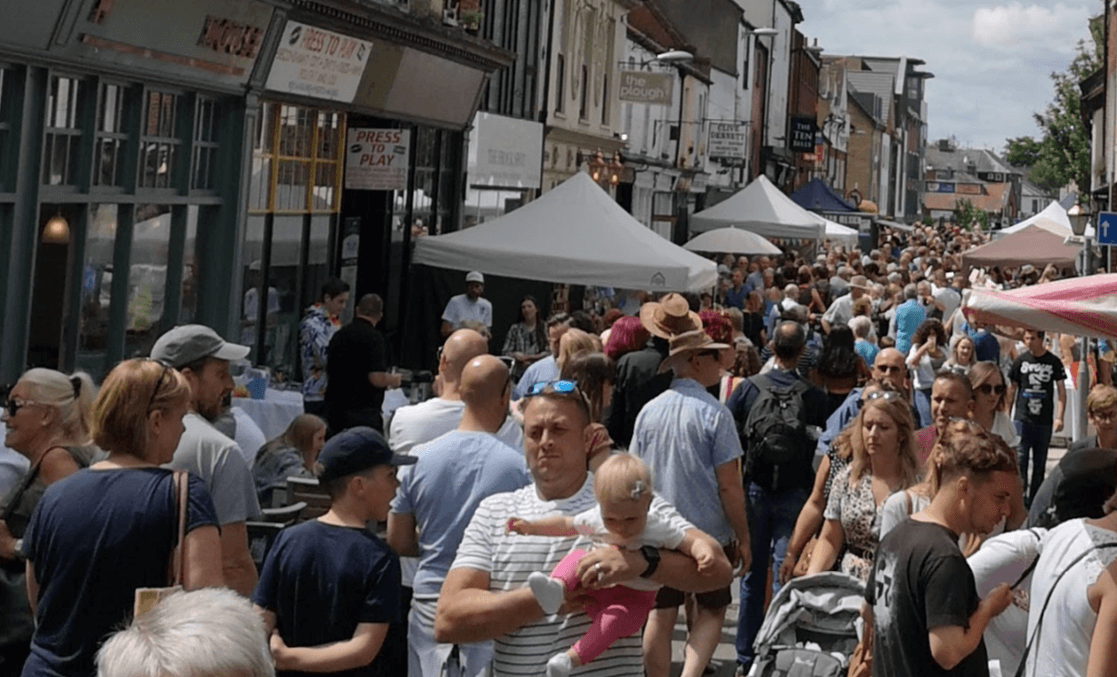
Maddermarket and Pottergate
Maddermarket and St Giles form a quieter, more architectural-focused part of the Norwich Lanes, rich in history and marked by medieval and Georgian influences. Maddermarket takes its name from the madder plant, used in the textile dyeing industry that was central to Norwich’s economy in the medieval period.
The Maddermarket Theatre, a converted 15th-century chapel concealed on John’s Alley, is a cultural icon linking the City of Stories’ love for the arts to influential figures like Shakespeare and Sir John Gielgud thanks to Nugent Monck, a visionary actor-director who founded the theatre.
The area’s connection to performance arts runs deep – it was here in 1599 that Will Kempe reportedly jumped over the churchyard wall at the end of his nine-day Morris dance from London to Norwich, winning his bet with Shakespeare. A wooden carving of Kempe remains in nearby Chapelfiled Gardens, commemorating the flamboyant member of Lord Chamberlain’s Men.
The surrounding narrow streets carry a historic charm that still thrives today, with those dining alfresco at Yard able to enjoy their Italian delights within the grounds of the Church of St. John The Baptist that corners Pottergate and the Maddermarket area.
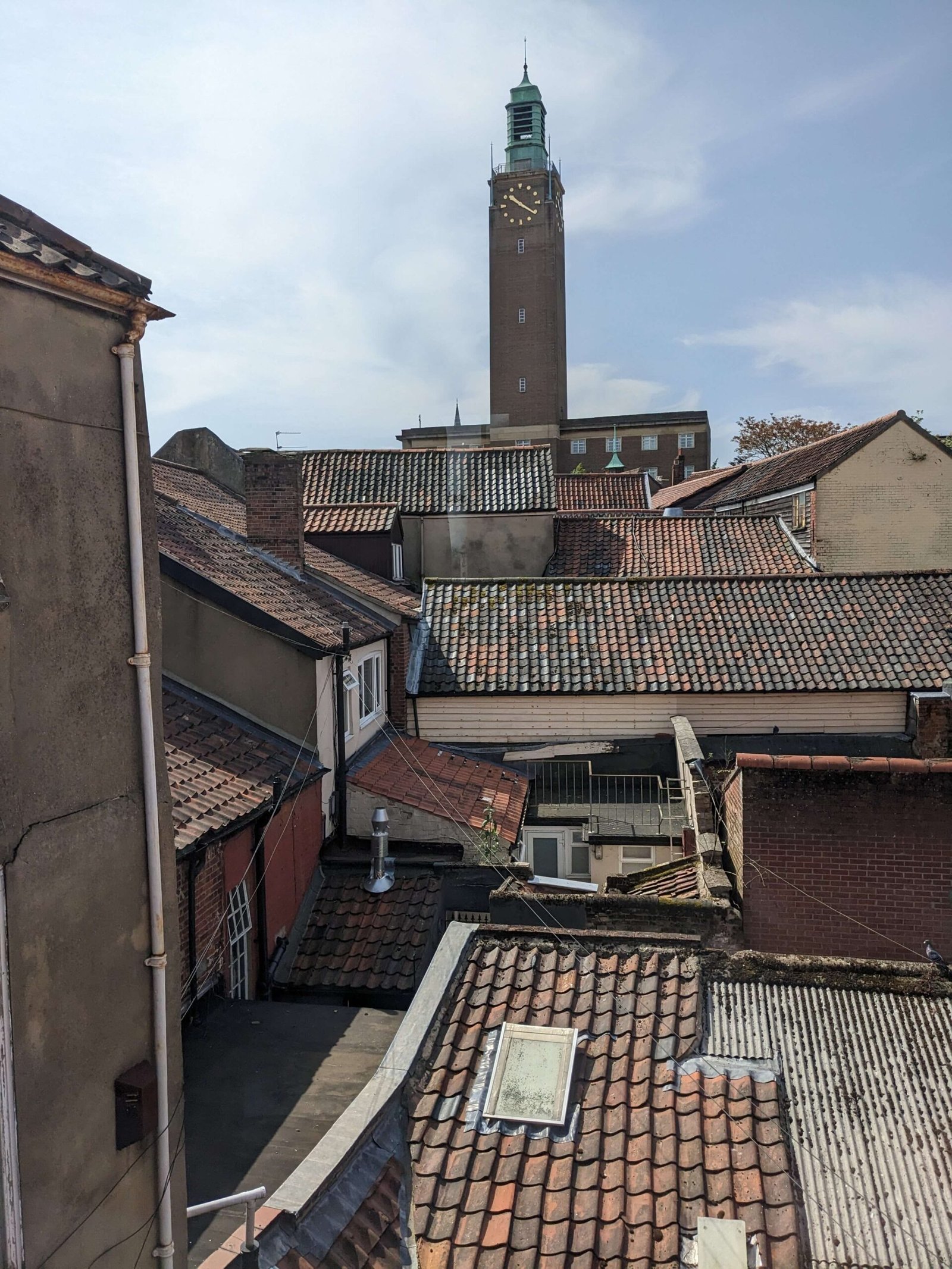
St Giles and Lower Goat Lane
St Giles Street is one of the more elegant areas of the lanes, its 19th-century buildings, a calm contrast to the busy, winding lanes nearby. Many a busy trader would have passed through the long demolished city walls via the St Giles Gate that once stood where the Roman Catholic Cathedral looms today. Taxed and levied, the traders would have conducted their business in the many stalls that would have lined the streets leading to the Guildhall and Norman marketplace. Wealthy merchants paved and remodelled the roads of St Giles, their profits from Norwich’s booming textile and shoe industries slowly wiping away many signs of the medieval roots on this grand street.
The Victorian-era St Giles House Hotel is a beautiful example of adaptive reuse, transforming the former God House Hospital site into an office in a Neo-Baroque style and then eventually in 1996 into a boutique hotel. Sadly, the nearby St Giles car park now sits in place of what must have been one of the most striking sights on the street – the Grand Opera House (and subsequent Hippodrome). While the venue saw artists like Laurel & Hardy, Charlie Chaplin and Morecambe & Wise perform, it was eventually demolished in 1960 after damage in the war and costs of maintenance leading to a state of disrepair.
Many of the other grand facades of various periods remain on this street though, with examples like the Masonic Hall and the aforementioned St Giles House Hotel, with its 15th-century undercroft, being shining examples. St Giles Street itself is watched over by the tallest church tower in the city of Norwich, reflecting the historical affluence of the area. Built in the 14th century, St Giles-on-the-hill boasts a striking 120-foot tower that rises proudly from the wisteria-covered walls.
Taking a short walk from St Giles towards the Guildhall and Norwich Marketplace, visitors arrive at Upper and Lower Goat Lane. A vibrant part of the Norwich Lanes, known for a buzzing mix of independent shops – both old and new. One of the most notable figures associated with this area is George Skipper, a renowned Norwich architect whose influence is seen throughout the city and beyond. Skipper’s ornate details and bold designs, helped shape the architectural landscape of Norwich during the late 19th and early 20th centuries. While his grander projects, such as Surrey House, Jarrolds Department Store and the Royal Arcade, dominate other parts of the city, his influence can still be felt on the tip of Upper Goat Lane where No 7 St Giles sits. Clad in hues of gold and terracotta, this towering expressive piece of architecture with a circular turret is one of our favourite buildings in the city. Whilst a hugely bold statement, poet John Betjeman’s supposed reference to Skipper being “to Norwich what Gaudi was to Barcelona“, isn’t without merit.
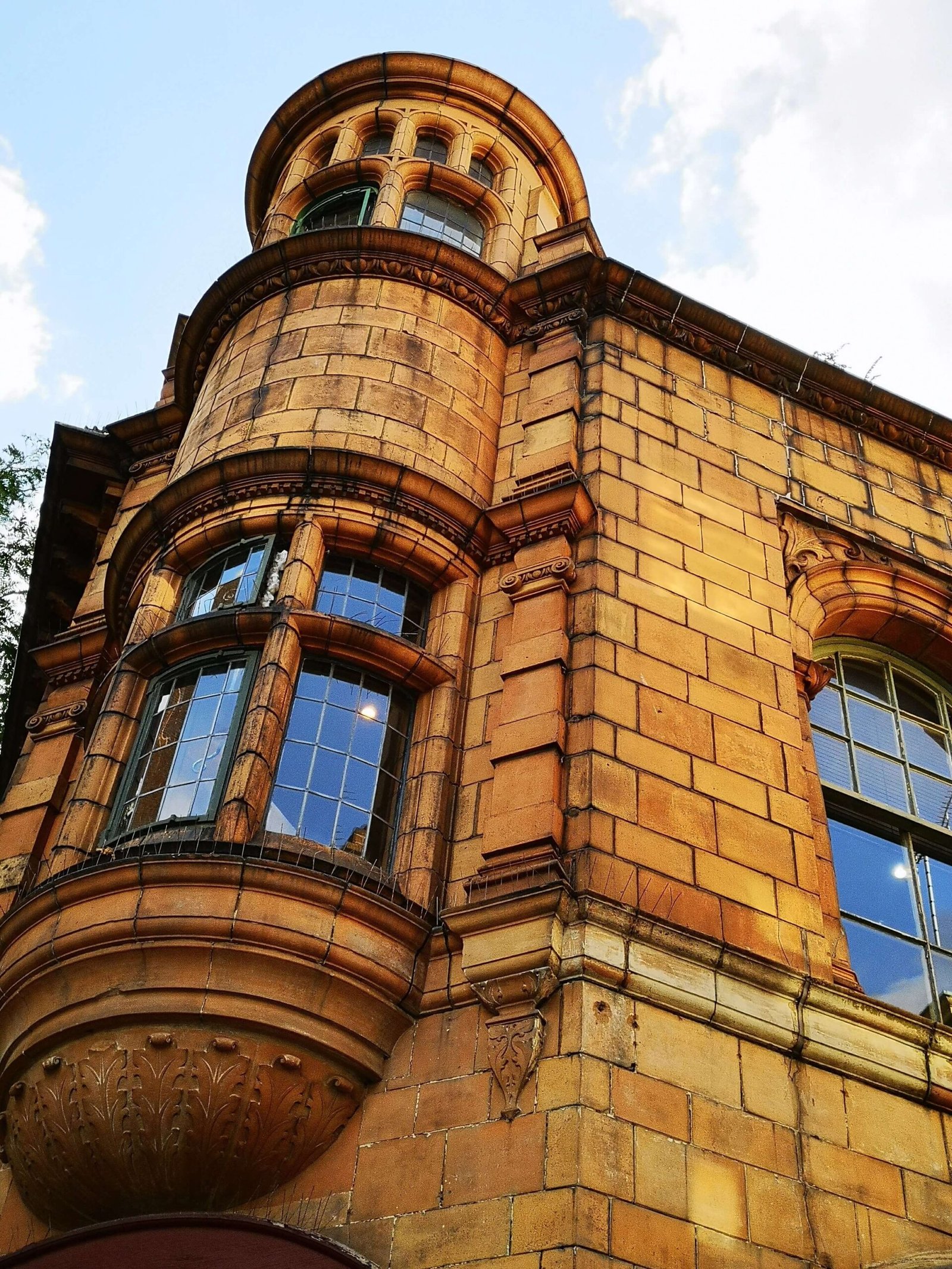
Named after The Goat, the 17th-century tavern that once traded here, Lower Goat Lane is a narrow, lively street that hosts many successful, long-established businesses with the Grosvenor Fish Bar being most worthy of mention. Known for serving up all manner of seafare alongside their award-winning chips, the Grosvenor Fish Bar has been a staple for locals and visitors alike. There’s a healthy combination of tradition and modernisation in both its menu and its quirky basement seating area in one of the few undercrofts open to the public in Norwich.
Another highlight, just a Kempe-style hop, skip and jump from the end of Lower Goat Lane, is St. Gregory’s Church. This medieval structure dates back to the 14th century. Once a place of worship, it is yet another example of repurposing the fine city’s architecture to preserve treasures of the past. It now serves as a venue for the Aladin’s cave of delights that is St. Gregory’s Antiques & Collectables. This site regularly houses an array of vintage treasures and record fairs.
Besides the many independent fashion, gifts and jewellery shops, Lower Goat Lane is also famous for vibrant culinary scents wafting from establishments with the tastes of Mexico, France and The Med being crafted faithfully at Mambo Jambo, L’Hexagone and Moorish Falafel.
Bedford Street and Gentleman’s Walk
Bedford Street, a narrow thoroughfare dating back to medieval times, connects the market area to London Street, while Gentlemen’s Walk forms the eastern boundary of the historic Norwich Market.
Norwich Market, adjacent to Gentlemen’s Walk, has been a city fixture almost a millenium. This vibrant market boasts nearly 200 diverse stalls, again a bustling mix of contemporary cultures and flavours mixed with traditional favourites.
Jarrold’s Department Store, designed in 1903 by George Skipper, stands proudly at the corner of both London Street and Exchange Street, near Bedford Street. This family-owned business has become a Norwich institution, evolving from a printers, to a publisher, to a landmark store that embodies the city’s independent retail spirit. With grand staircases and a baroque-style facade that was further remodelled by Skipper in 1923, this icon’s prestigious status, complete with branding flying from its flagpoles, further contributes to the area’s architectural diversity.
Another department store, Chamberlins, stood near the Guildhall corner of Dove Street and stretched a good distance down said street. Unfortunately, fires in 1898 destroyed much of the length of the store and a good portion of the Norfolk and Norwich Subscription Library. The remaining parts, house a Tesco Metro at its base (soon to be relocated).
The Royal Arcade, opened in 1899, is another architectural masterpiece that the city owes to George Skipper. Built in the Art Nouveau style, this ornate covered shopping street connects Gentlemen’s Walk to Castle Street. It’s exquisite tiled interior and sleek bow windows formed from rich mahogany give each shop within an organic feeling, making use of the natural light from the elegant glass roof that once was the only light source. Other decorative elements like the intricate tiles manufactured by Doulton brighten the avenue with depictions of peacocks, flowers, and fruits.
Langleys toy shop had one of the longest presences in the arcade. Originally known as Galpins, Langleys top up a number of floors for years at the marketplace end of the arcade, before more recently moving to a unit in Chantry Place.

The Royal Arcade was built on the site of an old coaching inn called The Angel, which later became the Royal Hotel which was a remarkably popular venue before it relocated to Bank Plain (the present-day building that houses Be At One and The Royal Business Offices. Clever design touches in the design above the entrances potentially link back to the origins of this land, the beautiful face of an angel is one that catches the eye above vast arches of coloured glass.
Bedford Street, near the marketplace, has seen the creative repurposing of historical structures. The Cosy Club restaurant, located at the top of the sloping avenue, occupies a grand 1920s banking hall. The restaurant has ingeniously incorporated the building’s original features, including the imposing vault doors in the basement, creating a unique dining experience that pays homage to the site’s financial past.
Beneath the streets lie several medieval undercrofts, vaulted cellars that once served as storage spaces for wealthy merchants. Some of these, like the undercroft beneath the Guildhall, have been preserved and can be visited, offering a glimpse into Norwich’s medieval commercial life. Others, like that below Bedfords Bar, are excellent examples of how historical undercrofts in Norwich are repurposed for modern use. The 15th-century crypt has been transformed into a popular nightclub space, adapting it for contemporary use.
Elm Hill
Whilst this article omits many important streets within the Norwich lanes, Elm Hill is essential to discuss. Often considered one of the most complete medieval streets in England, this gently descending, cobbled street is lined with beautifully preserved Tudor buildings, many dating back to the 16th century. Often enjoyed by photographers, landscape artists, and many a pub-reveller who’s fallen foul of the uneven paving, this street holds a very special place in the heart of many locals.
The street takes its name from the elm trees that once grew along it but were decimated by disease. The lone tree that remains is not an elm, but a London Plane, planted as a disease-resistant replacement. Many of the buildings along Elm Hill have been converted into small independent shops, cafes, and galleries, but they retain much of their historical character. Elm Hill is a calming oasis with many of the businesses located here offering the chance to slow down and relax. The Bear Shop offers tradition, Olives offers a tasty retreat for brunch, while the notable Britons Arms holds the title of the street’s most prominent building.
A former Tudor house that survived a devastating fire in 1507, the Britons Arms now functions as a popular tea room with a secluded raised courtyard at its rear. Its striking presence, along with the whole street, has made it a frequent filming location, featured in various television series and films.
Legacies left unexplored
The Norwich Lanes have been home to, or associated with, numerous notable individuals who have left their mark on the area. Norwich truly is a city of stories, lives, cultures and influences that have ebbed and flowed to create the technicolour palette we see before us today. We haven’t even mentioned many important names who shaped Norwich’s lanes like Elizabeth Fry, Sir Thomas Erpingham, Edith Cavell, Pablo Fanque, or Jenny Lind, their tales mentioned on many a blue plaque dotted around the city. This is exactly why we love writing about it! There’s simply so much woven into these lanes that we hope that this article inspires you to visit, enjoy, reflect and experience all that is on offer – and that has come before.
The Norwich Lanes in Modern Times
We are not historians, and whilst we’ve tried to make sure as much of this article is true to fact, we’d love to hear more about your memories and experiences old or new of Norwich. Today, the Norwich lanes remain a great source of pride for many, and they solidly champion the city’s ability to preserve its heritage while embracing modernity. The area is home to over 300 independent retailers, cafés, restaurants, pubs, and bars these days. It also boasts a well-supported independent cinema, community theatre, museums, galleries, and numerous live music venues; it is a beating cultural heart!
Cherish it.


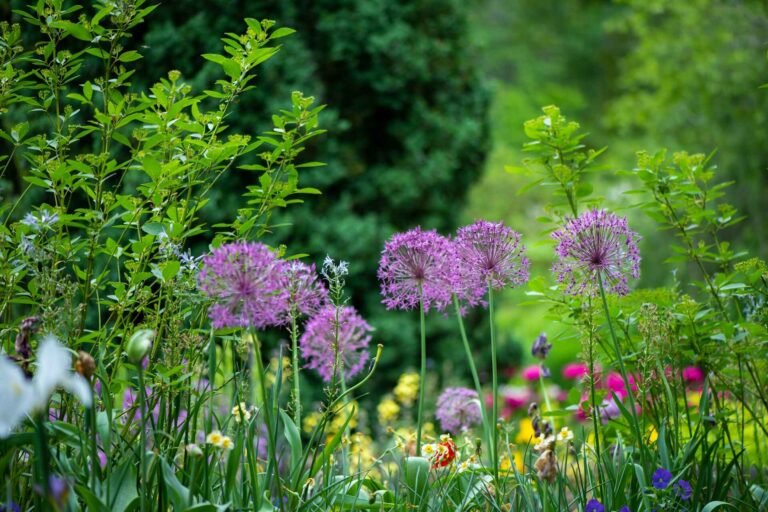

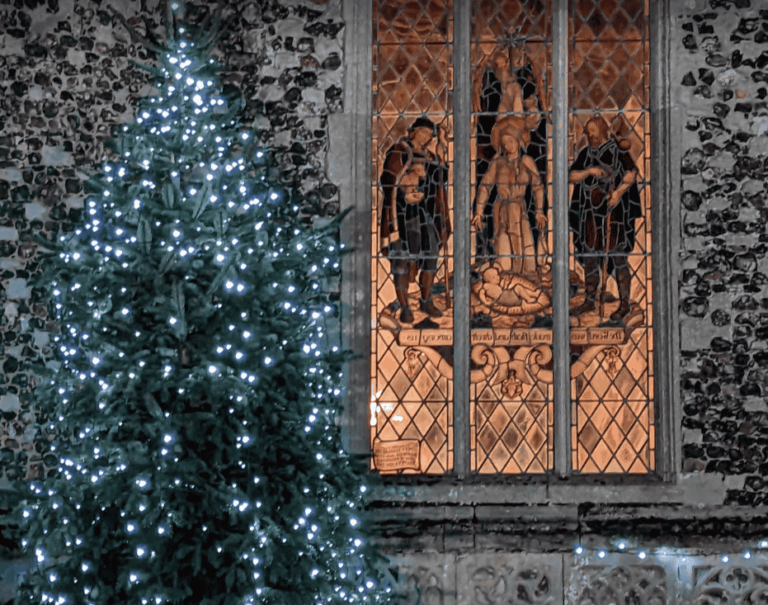
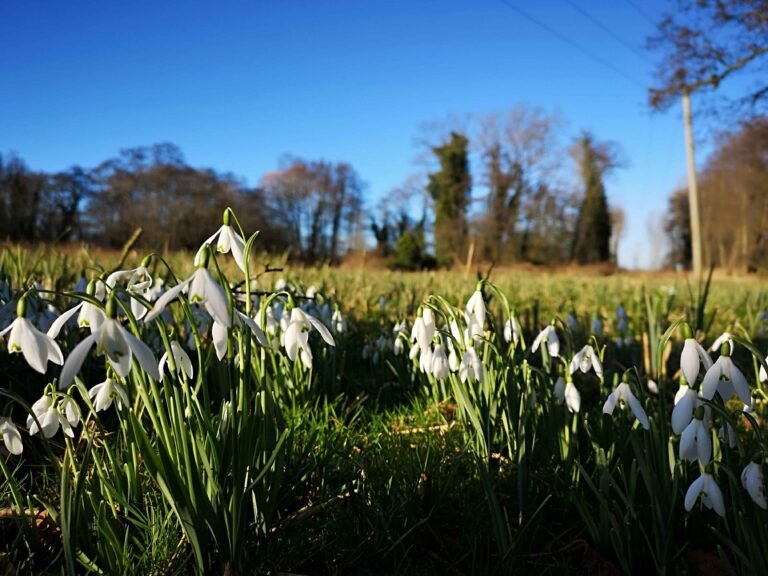

2 Comments